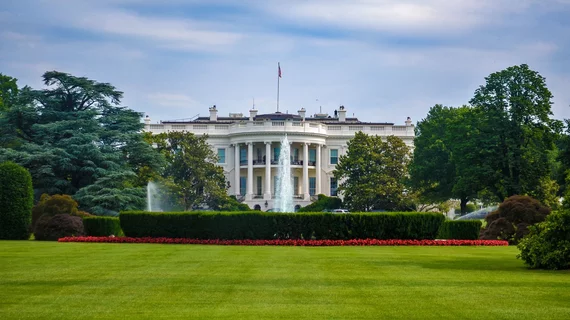Paralleling its drive for greater transparency in hospital and insurer pricing, the Trump Administration is calling for artificial intelligence to be made more readily understandable in all industries using it—and that includes healthcare.
The AI directive arrives in the form of a strategic plan issued this week by the cabinet-level National Science and Technology Council.
An official update of the National AI R&D Strategic Plan released in 2016, the initiative fleshes out priorities to guide the government as well as AI researchers seeking federal funding.
While greater transparency isn’t the plan’s sole priority, the authors’ emphasis on that attribute is pronounced.
AI researchers “must learn how to design these systems so that their actions and decision-making are transparent and easily interpretable by humans, and thus can be examined for any bias they may contain, rather than just learning and repeating these biases,” the document states.
Further, researchers “must develop systems that are … intrinsically capable of explaining the reasons for their results to users.”
The plan is organized around eight broad strategies. Here they are, along with each one’s stated gist:
1. Make long-term investments in AI research. “Prioritize investments in the next generation of AI that will drive discovery and insight and enable the United States to remain a world leader in AI.”
2. Develop effective methods for human-AI collaboration. “Increase understanding of how to create AI systems that effectively complement and augment human capabilities.”
3. Understand and address the ethical, legal and societal implications of AI. “Research AI systems that incorporate ethical, legal and societal concerns through technical mechanisms.”
4. Ensure the safety and security of AI systems. “Advance knowledge of how to design AI systems that are reliable, dependable, safe and trustworthy.”
5. Develop shared public datasets and environments for AI training and testing. “Develop and enable access to high-quality datasets and environments, as well as to testing and training resources.”
6. Measure and evaluate AI technologies through standards and benchmarks. “Develop a broad spectrum of evaluative techniques for AI, including technical standards and benchmarks.”
7. Better understand the national AI R&D workforce needs. “Improve opportunities for R&D workforce development to strategically foster an AI-ready workforce.”
8. Expand public-private partnerships to accelerate advances in AI. “Promote opportunities for sustained investment in AI R&D and for transitioning advances into practical capabilities, in collaboration with academia, industry, international partners and other non-Federal entities.”
In a note introducing the material, Michael Kratsios, deputy assistant to the President for technology policy, notes that the plan does not define specific research agendas for federal agency investments.
It does, however, “provide an expectation for the overall portfolio for Federal AI R&D investments,” Kratsios writes. “This coordinated Federal strategy for AI R&D will help the United States continue to lead the world in cutting-edge advances in AI that will grow our economy, increase our national security and improve quality of life.”

